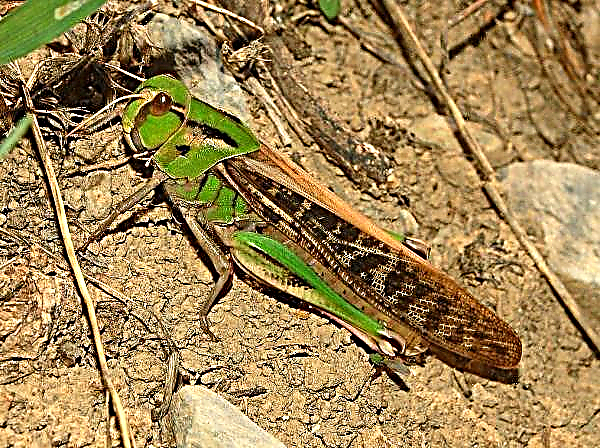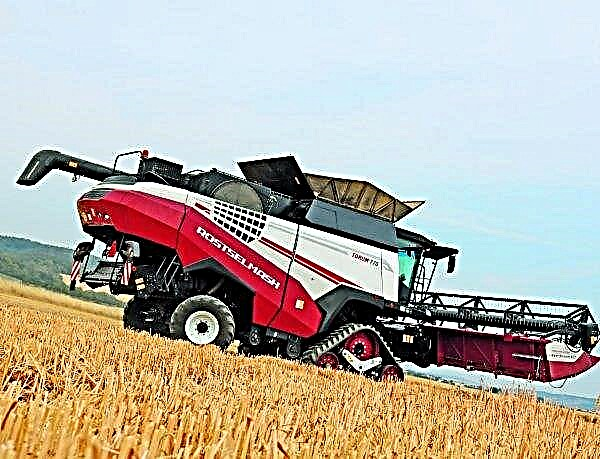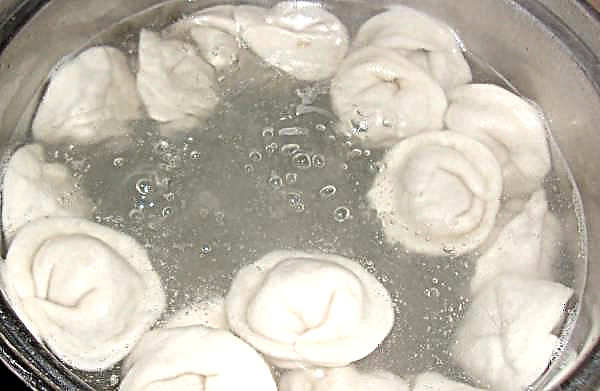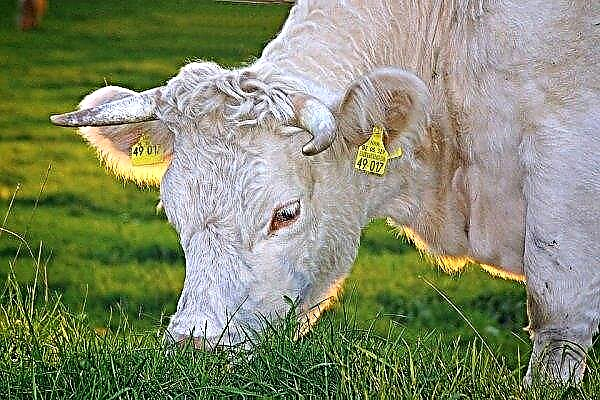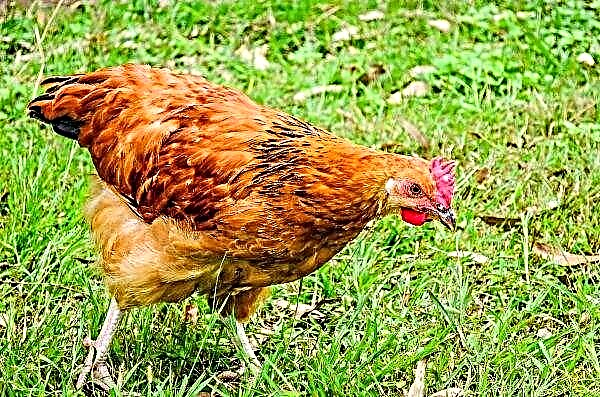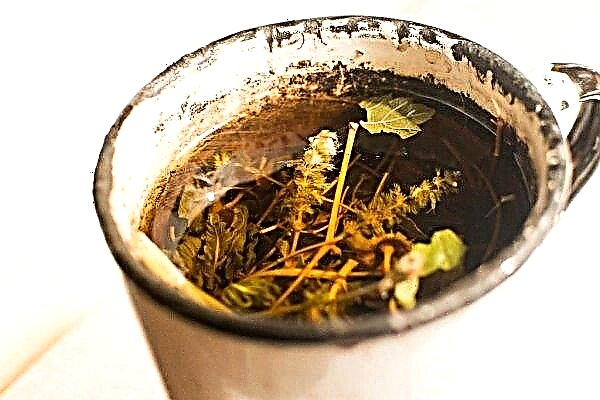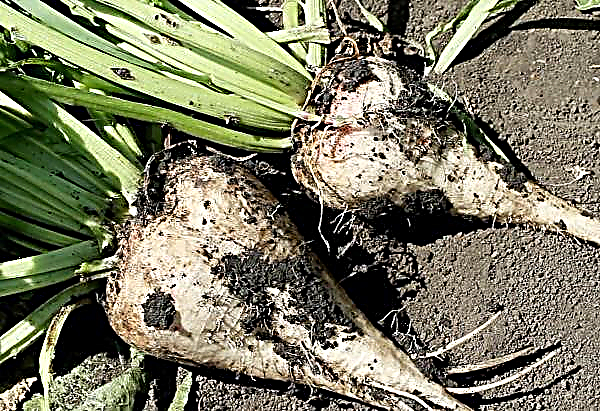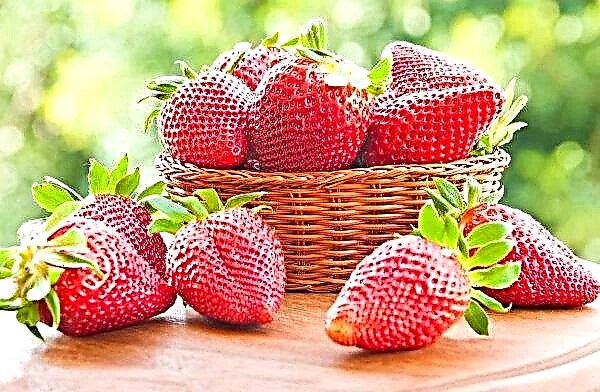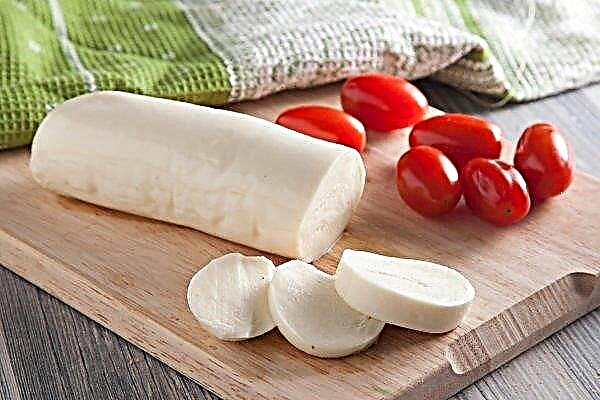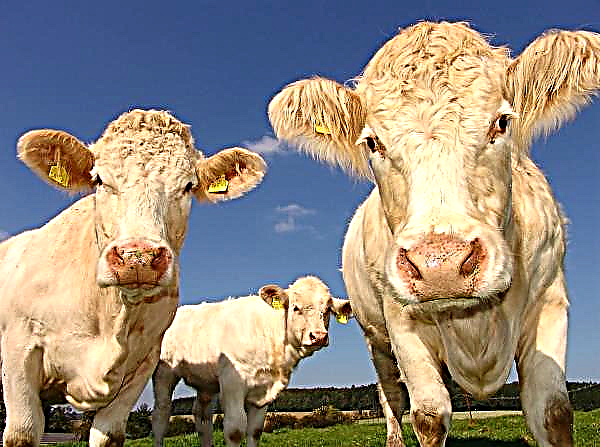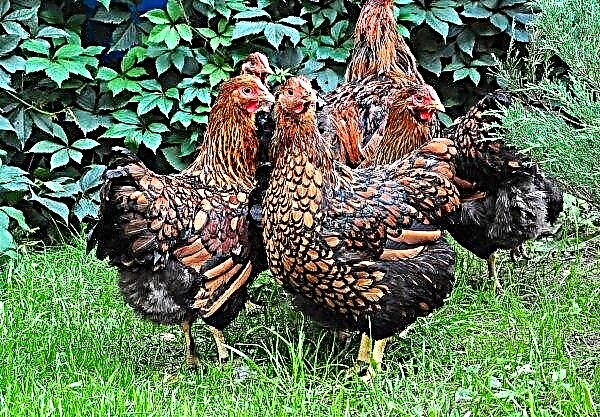Hearing the word "chicken", many immediately imagine a fussy bird, fumbling in a garbage or dunghill in search of food, so most of these animals are associated with something plain and unattractive. But they forget that thanks to the efforts of breeders in the world there are a huge number of species of chickens, among which there are decorative ones and even pheasants can envy their appearance. Pavlovsky hens, which will be discussed in this article, are precisely such birds.
Origin of breed
The breed appeared on the territory of modern Russia, but little is known about the history of its origin. Due to the fact that almost no attention was paid to the breeding of local breeds of chickens in the era of Tsarist Russia, the selection procedure was not documented. Therefore, now, relying on some data, breeders claim that the breed appeared by naturally crossing representatives of different breeds. According to other sources, Pavlovsky hens were bred by breeders who had the task of obtaining unpretentious and frost-resistant birds. Whatever the story of the origin of the “golden” chicken, the breeders definitely took part in its fate. Since earlier in Russia foreign birds were in price, no one followed the emerging breed properly, which is why during the revolutionary period the bird practically disappeared. She was not remembered until the eighties of the last century, until Moscow breeders decided to try to restore the breed. And they succeeded.
Whatever the story of the origin of the “golden” chicken, the breeders definitely took part in its fate. Since earlier in Russia foreign birds were in price, no one followed the emerging breed properly, which is why during the revolutionary period the bird practically disappeared. She was not remembered until the eighties of the last century, until Moscow breeders decided to try to restore the breed. And they succeeded.
The breed received its name from the village of the same name in the Nizhny Novgorod Region. Presumably, in this place the breed appeared. Now local breeders are considered the best, as they were able to preserve genetics and unusual color (the presence of "gold" and "silver" in the plumage).
Now there are two pedigree types of color in the plumage of Pavlovsky hens: golden and silver. The rest are more often referred to as “substandard”.
Characteristic
Breeders divide Pavlovsky chickens into:
- golden-spotted (the basis of the color is brown with a touch of gold, and the tips of the feathers are black. Dark spots cover the lower back, shoulders, neck, wings and are similar in shape to the bird sign “V”. The feathers are golden, the outside is darker than the inside);
- silver-spotted (the basis of the color is silver-white, dark inclusions are the same as the previous color).
 There are also:
There are also:- white (plumage is completely snow-white);
- porcelain (very colorful color, it is difficult to distinguish some basic tone);
- yellow or fawn;
- black (from the tip of the beak to the tip of the tail, the bird is painted black).
Important! The last four varieties are very rare and quite often rejected due to non-compliance with standards on some grounds.
Photo gallery
Description of appearance
The external characteristics of the chickens of this breed are as follows:
| Appearance | Description |
| Head | round, medium with a beautiful crest of feathers |
| Crest | small, usually underdeveloped, in the form of a "V", red |
| Eyes | large, black or dark cherry |
| Beak | slightly curved, taking on shades from pink to bluish black |
| Neck | short, slightly curved, with a beautiful collar of dense feathers |
| Back | tapers towards the tail |
| Chest | convex, pronounced |
| Stomach | rounded |
| Wings | developed, pressed to the body tightly |
| Tail | upright, large, lush, in males with long feathers and widely spreading |
| Paws | short, with four fingers, with long feathers in the middle of the metatarsus, then covered with a short feather |
| Plumage and color | dense plumage, all feathers at the end are black, the rest are golden or silver |
Temperament
Pavlovsky laying hens, as it should be for good hens, are calm, melancholy, unshakable, rarely stir. Roosters are true males, ready to zealously defend their territory and prove their leadership to other cavaliers from the herd, so cockfights are not uncommon among them.  A rooster accustomed to harrowing its hens from any danger can easily begin to attack a person if something seems suspicious in his behavior.
A rooster accustomed to harrowing its hens from any danger can easily begin to attack a person if something seems suspicious in his behavior.
Did you know? At a time when there was a revival of the Pavlovsk breed and demand for it, a bid was made at the auction for the purchase of birds at $ 2 million.
Advantages and disadvantages
- The positive aspects of the breed are:
- fast ripening;
- relatively large eggs;
- well-developed qualities of the hen;
- frost resistance;
- excellent adaptation to any conditions;
- high offspring survival rates.
- The disadvantages include the following:
- the high cost of birds, due to their poor prevalence;
- meat and egg productivity is inferior to similar breeds that are more affordable;
- too lively males.
Features of care and maintenance
Since Pavlovsky chickens are more likely representatives of decorative breeds than ordinary meat and egg chickens, they are a little more demanding of their relatives in grooming.
Chicken coop requirements
Cellular content is detrimental to the breed. Pavlovsky hens are “free” birds that require free space for walking, so a chicken coop should be built for their breeding. For a dozen goals, the room should have dimensions of three by three meters. It is not necessary to heat it, as the golden and silver birds have good plumage, and they just need to run around to keep warm. But you still need to insulate the chicken coop, especially the floor, covering it with straw, hay or sawdust. If the birds are small, then the chicken coop should be made heated. Pavlovsky chickens feel good at +10 ... + 15 ° С heat and medium humidity.
It is not necessary to heat it, as the golden and silver birds have good plumage, and they just need to run around to keep warm. But you still need to insulate the chicken coop, especially the floor, covering it with straw, hay or sawdust. If the birds are small, then the chicken coop should be made heated. Pavlovsky chickens feel good at +10 ... + 15 ° С heat and medium humidity.
The chicken coop must be equipped with ventilation for the influx of fresh air and maintain microclimate. There should be good lighting.
Chickens of different colors are best kept separately. To do this, you can install a mesh partition. Perches are set at a height of 70–80 centimeters from the floor in the most comfortable place in the chicken coop. Nests are placed there on the floor, and covered with hay or straw.
Did you know? In 1899, Pavlovsky chickens received the status of a national breed.
Walking yard
Pavlovsky chickens are very fond of walking in the fresh air, so for them you definitely need to equip a walking yard. Here in the summer they can spend whole days going to the chicken coop only for the night. In winter, in severe frosts, the duration of walks should be reduced. When arranging a courtyard, you need to take into account such moments:
When arranging a courtyard, you need to take into account such moments:
- the boom should be high;
- it is desirable to have a mesh roof and a canopy that protects animals from the sun and rain;
- land in the courtyard should be lined with grass, hay, straw;
- on the territory it is necessary to install drinking bowls and feeders.
Feeding troughs and drinking bowls
Tanks for food and water must meet the following requirements:
- profitability (the design should be such that the bird could not fit into the container with its paws and spoil the contents of the vessel);
- accessibility to care (easy to clean, wash, environmentally friendly);
- strength (indestructible under the weight of birds).
Feeding chickens
The diet of Pavlovsky hens is indistinguishable from the menu of their relatives. In the summer, they are able to independently provide themselves with food, provided that they have access to green lawns. They will gladly eat everything they find under their feet. You can diversify this diet with fresh vegetables, soaked bread, lactic acid products.  In winter, access to green food is closed, so the basis of the diet is grain, moist mixes, vegetables, and vitamins, chalk, egg shells, meat and bone meal and fish meal are used as additives. In cold weather, chickens are fed three times a day, in warm - twice.
In winter, access to green food is closed, so the basis of the diet is grain, moist mixes, vegetables, and vitamins, chalk, egg shells, meat and bone meal and fish meal are used as additives. In cold weather, chickens are fed three times a day, in warm - twice.
Herd replacement planned
Though they lay their eggs, the Pavlovsky laying hens begin quite late, at the age of about one year, nevertheless they maintain high productivity for a long time (3-4 years), so there is no need to rush with the preparation of replacing the herd. Good offspring can always be obtained, since the percentage of chick survival is high, and the hens are very caring mother hens.
Shedding and egg laying break
The molting period coincides with the beginning of autumn. This is natural, as the temperature decreases, the duration of daylight hours decreases, which means that you need to change the plumage to "winter". The body spends a lot of resources on molting, so egg laying temporarily stops. On average, it takes about two months to restore feather cover. At this time, it is necessary to enrich the animal's diet with vitamins and minerals. This will avoid cannibalism and speed up the process of molting, and hence the renewal of egg laying.
How to raise chickens
We have already noted that due to the price and poor prevalence of Pavlovsky hens are not widely available to private households. Those who could afford to have such beauty keep 1-3 heads in the courtyard.  But if you managed to get at least a couple (rooster and chicken), then you can breed them yourself. The laying hens will hatch chickens in 21 days, and then it all depends on you.
But if you managed to get at least a couple (rooster and chicken), then you can breed them yourself. The laying hens will hatch chickens in 21 days, and then it all depends on you.
Proper feeding
To nestlings grow strong and healthy, they need to be properly fed:
- you need to start with a boiled egg, semolina or small corn grits, low-fat cottage cheese, crushed greens;
- be sure to include vitamin-mineral supplements in the menu every other day;
- disinfect drinking bowls, feeders in time, replace the litter;
- place a container with calcined river sand next to the feeders;
- at the age of 10-15 days, chickens can be transferred to compound feeds corresponding to their age, and also continue to give greens, vegetables, vitamins, minerals.
The necessary vitamins are A, E, D, group B. It is advisable that their chicks are obtained from natural products.Important! Chickens should not be fed milkweed, celandine and any spoiled food.
Baby Care
Chickens are hatched or hatched. Babies born are placed in a room with a temperature of +28 ... + 32 ° С and with a humidity of 55–65%, without drafts. In the early days of life, good nutrition and dry bedding is very important for them. Over time, when the younger generation is a little stronger, the temperature in the chicken coop can be lowered to +25 ° С, and from the tenth day of their life it is necessary to reduce it by 3 ° С to +18 ° С every week. From the fact that the chicks are comfortable, their behavior will testify. They will be active and with good appetite. If it is cold for them, then they will pile up together and begin to squeak.
Over time, when the younger generation is a little stronger, the temperature in the chicken coop can be lowered to +25 ° С, and from the tenth day of their life it is necessary to reduce it by 3 ° С to +18 ° С every week. From the fact that the chicks are comfortable, their behavior will testify. They will be active and with good appetite. If it is cold for them, then they will pile up together and begin to squeak.
Vaccination
Colds are not scary for Pavlovsky chickens, but infectious diseases can attack, so young animals should be vaccinated against diseases of Marek, Newcastle and Gamboro, as well as preventive measures against coccidiosis.
Whether it is necessary to vaccinate their herd, each poultry breeder decides independently. But if outbreaks of these diseases are noted in your area, then vaccination is best done.
Diseases of Pavlovsky hens
Nature endowed Pavlovsky chickens with good immunity, therefore, if the young generation was vaccinated on time, serious ailments will bypass your livestock. But birds still have health problems. They are usually associated with poor care:
But birds still have health problems. They are usually associated with poor care:
- digestive upset;
- stress;
- eggs without shells;
- cannibalism.
Typically, such problems are solved by revising the diet of birds, adding vitamin-mineral complexes to it and increasing the duration of walks. If the measures taken did not help, or any other changes in the condition of the birds for the worse were noted, then it is necessary to call a veterinarian.
We have described a unique breed. Such beautiful birds with good productivity and frost resistance are rare. If you manage to get a pair of these beauties, then all the neighbors will envy you.

